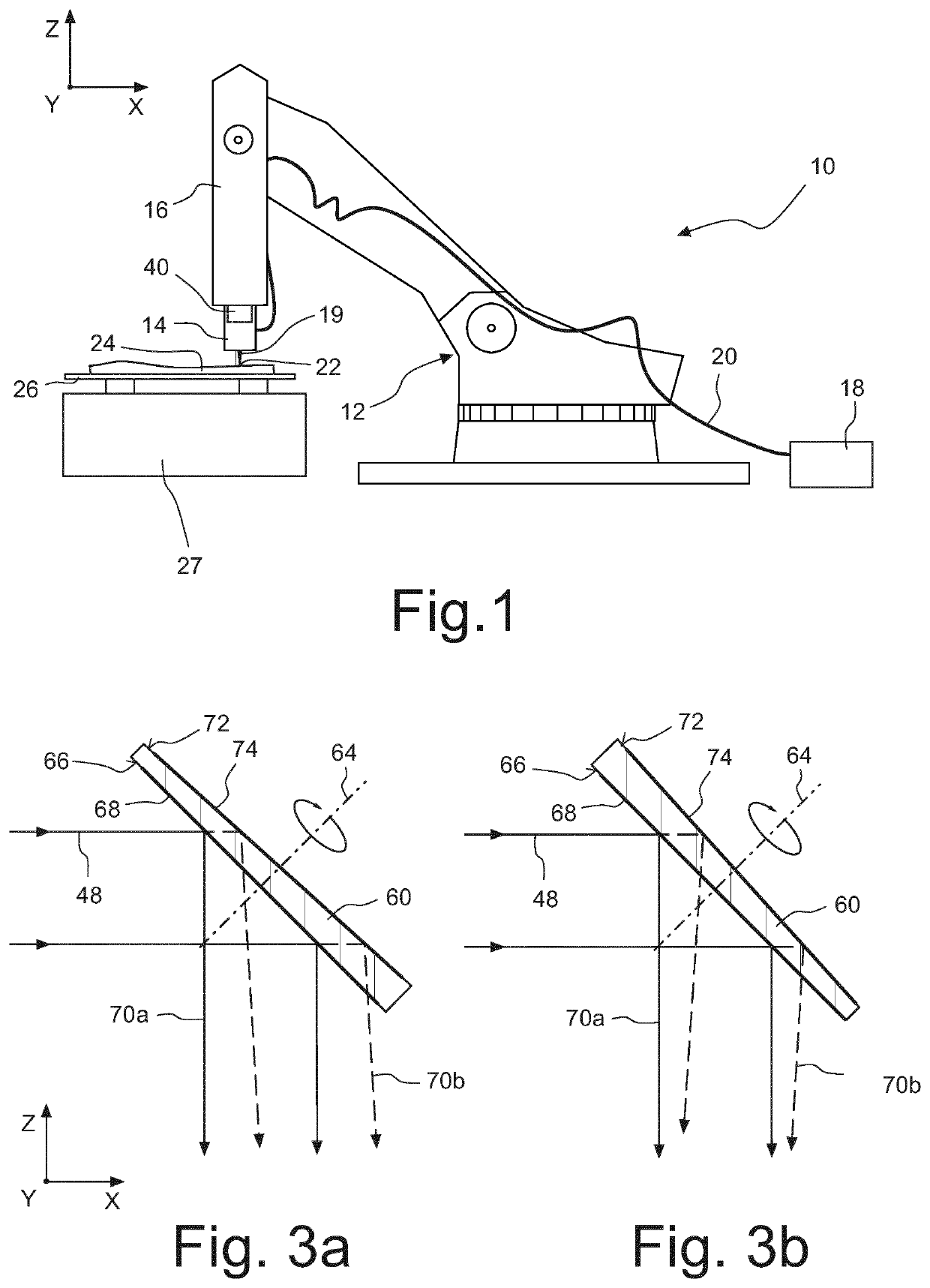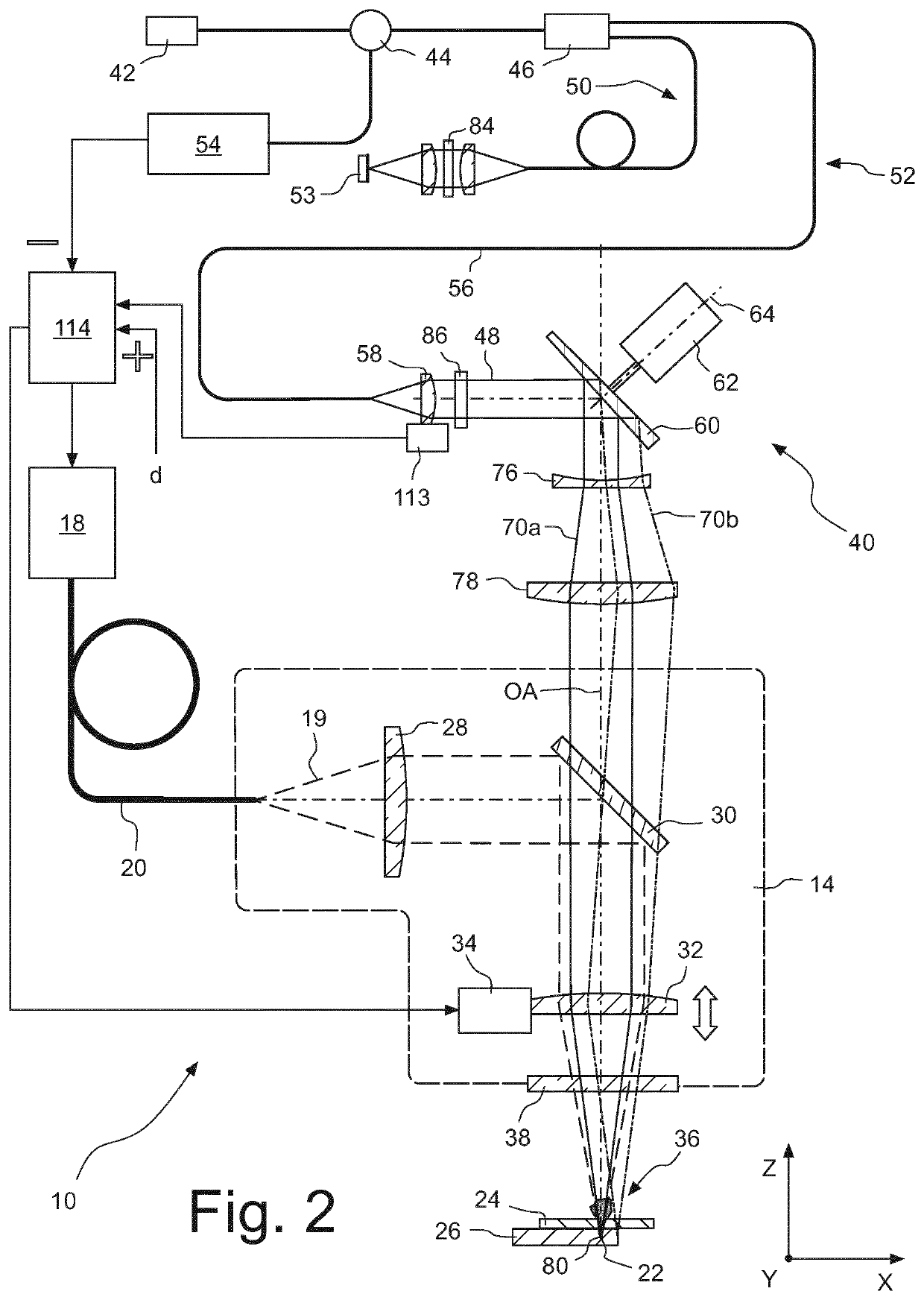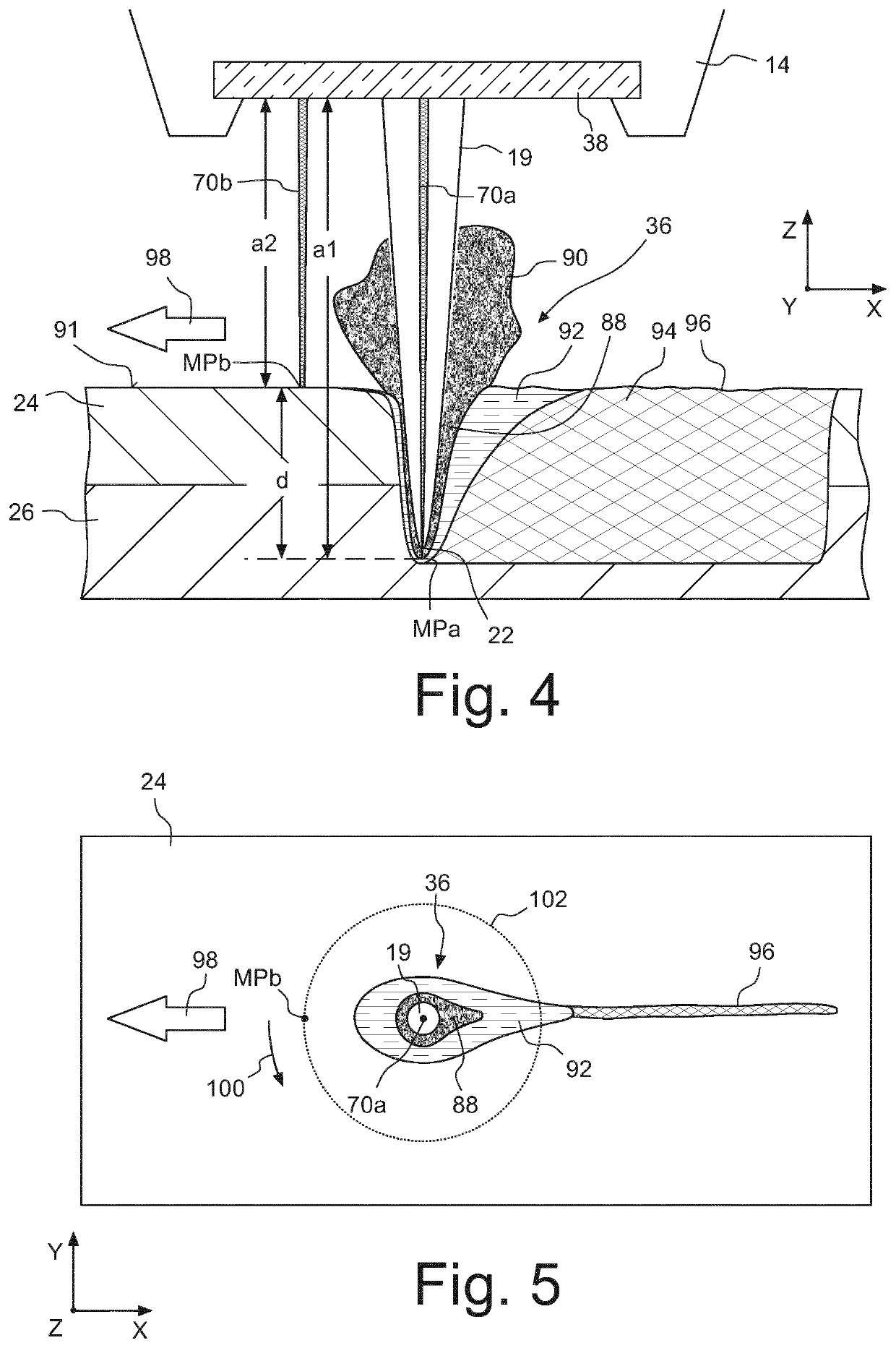Method and device for measuring the depth of the vapor capillary during a machining process with a high-energy beam
a technology of machining process and vapor capillary, which is applied in the direction of interferometers, manufacturing tools, instruments, etc., can solve the problems of welding through, undesirable variations in the penetration depth, and unsatisfactory solutions, and achieve the effect of reliable and accurate determination
- Summary
- Abstract
- Description
- Claims
- Application Information
AI Technical Summary
Benefits of technology
Problems solved by technology
Method used
Image
Examples
first embodiment
[0115]To solve this problem, it is proposed according to the invention, that each interference spectrum Pint,tn(k), that was generated at time tn, the spectrum Pint,tn-1 (k), that was generated at the immediately preceding instant tn-1, are subtracted at least partially and preferably completely according to equation (3):
ΔPint,tn(k)=Pint,tn(k)−Pint,tn-1(k) Eq.3
[0116]The Fourier transform is then supplied only for the thus calculated difference spectrum ΔPint,tn(k).
[0117]FIG. 10 illustrates this with reference to a graph in which a difference spectrum ΔPint,tn(k) is shown by way of example. It was assumed here that at the time tn-1, a disturbed interference spectrum was obtained, which represents a distance value of z=24 mm, and at time tn, a disturbed interference spectrum was obtained which represents a distance value z=20 mm. Since the interference spectrum 123 does not change, or changes only insignificantly, between two immediately successive times tn, tn-1, the influence of th...
second embodiment
[0128]In a second embodiment, another approach is taken to reduce the impact of interferences on the measurement. For this purpose, each interference spectrum Pint,tn(k), which was generated at time tn, divided by an average interference spectrum P(k), which is an average of a plurality of interference spectra, which were generated at earlier times tj, where j<m.
[0129]To explain this second approach, reference is first made to FIG. 12, which shows an undisturbed interference spectrum 132 generated by the coherence tomograph 40 after being divided by the above-mentioned white spectrum. This eliminates the equation Pein(k) in equation (1), which otherwise leads to undesired widening of the distance peaks in the Fourier transform of the measured interference spectrum. In addition, the signal was windowed in a manner known per se with a cos2 function 134 in order to reduce the smearing in Fourier space. Here, for the sake of simplicity, only the reflection at a single interface is consi...
PUM
| Property | Measurement | Unit |
|---|---|---|
| angle | aaaaa | aaaaa |
| angle | aaaaa | aaaaa |
| speed | aaaaa | aaaaa |
Abstract
Description
Claims
Application Information
 Login to View More
Login to View More - R&D
- Intellectual Property
- Life Sciences
- Materials
- Tech Scout
- Unparalleled Data Quality
- Higher Quality Content
- 60% Fewer Hallucinations
Browse by: Latest US Patents, China's latest patents, Technical Efficacy Thesaurus, Application Domain, Technology Topic, Popular Technical Reports.
© 2025 PatSnap. All rights reserved.Legal|Privacy policy|Modern Slavery Act Transparency Statement|Sitemap|About US| Contact US: help@patsnap.com



